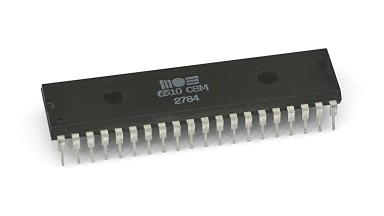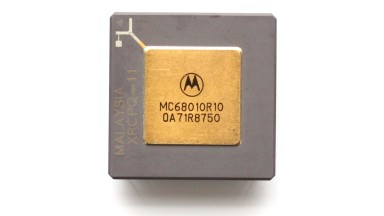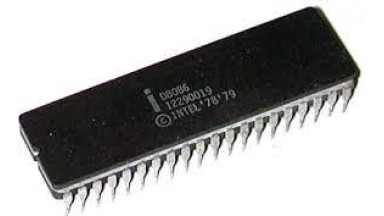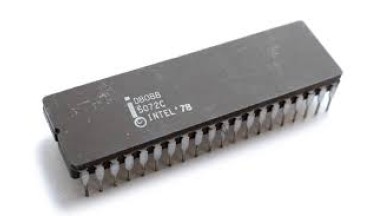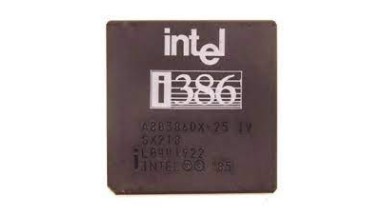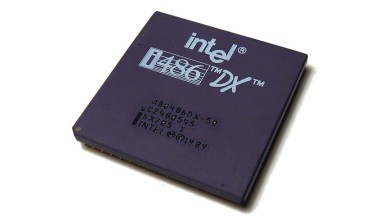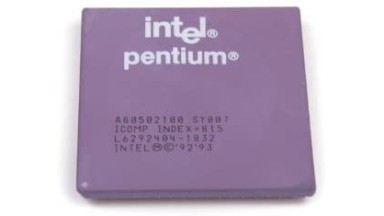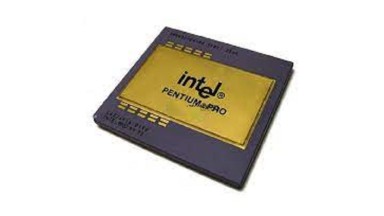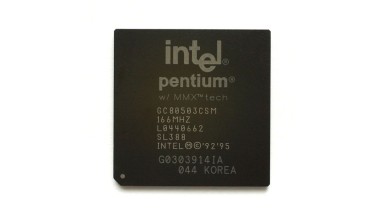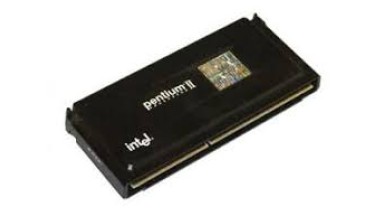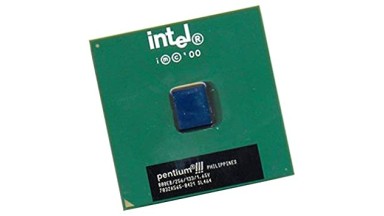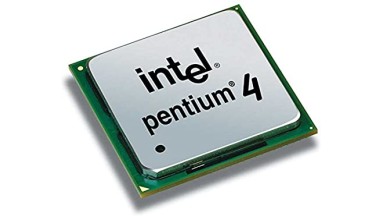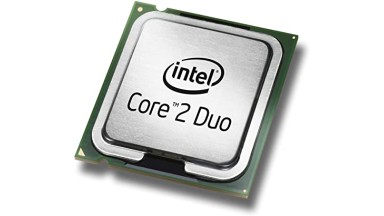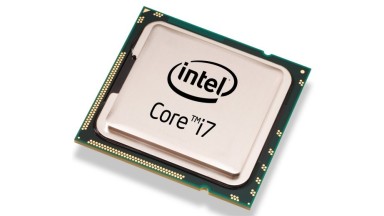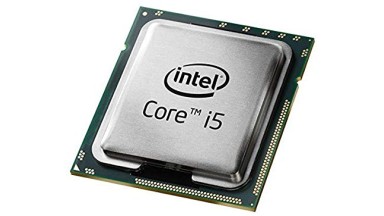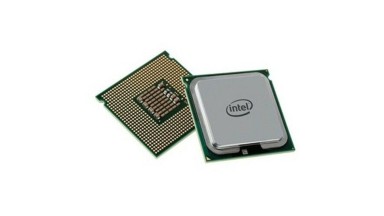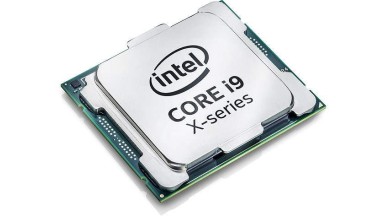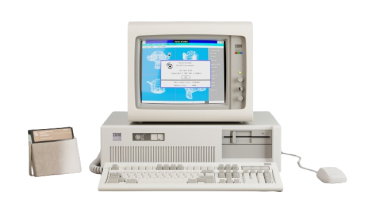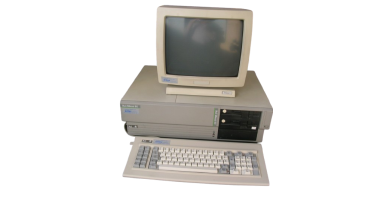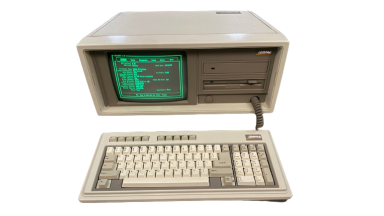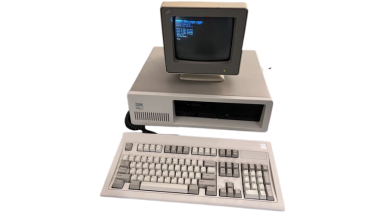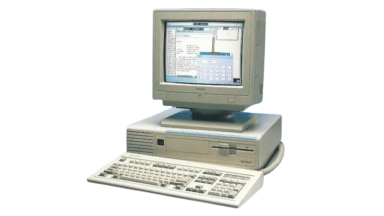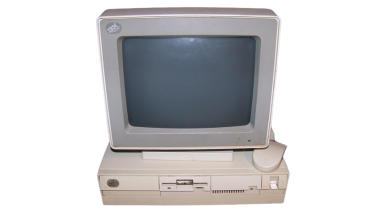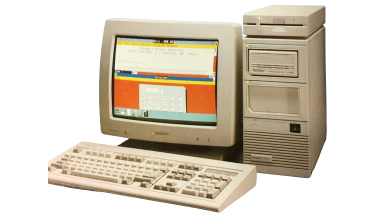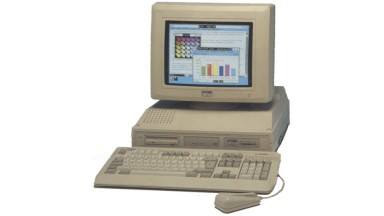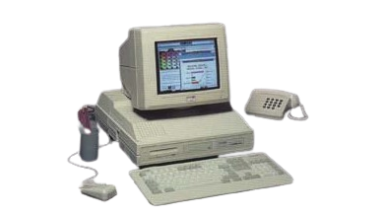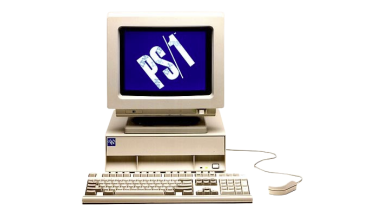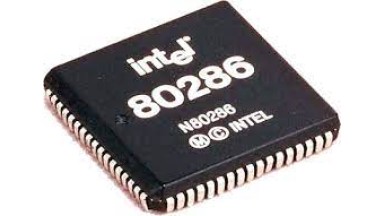
Intel 80286 contemporary microprocessors
Launched: 1982
Bits: 8
The MOS 6510 is the direct successor to the famous 6502.
The main change from the 6502 is the addition of an 8-bit general-purpose I/O port.
It was used as the CPU in the Commodore 64 home computer.
Launched: 1982
Bits: 16
Clock: 8 MHz
Transistors: 69 000
The Motorola 68010 corrected several bugs of the 68000 and added some features, which allowed it to use paged virtual memory.
Other microprocessors in the family of Intel 80286
Launched: 1978
Bits: 16
Clock: 4.77 MHz
Transistors: 29 000
Technology: 3 nanometers
The first 16-bit microprocessor designed by Intel.
It was the first member of the popular x86 architecture, used to this day.
Launched: 1979
Bits: 16
Clock: 4.77 MHz
Transistors: 29 000
Technology: 3 nanometers
A reduced-cost version of the Intel 8086 with a data bus reduced to 8 bits so that it could use circuitry from previous-generation computer manufacturers and thus reduce computer costs.
Launched: 1985
Bits: 32
Clock: 12 MHz
Transistors: 275 000
Technology: 1.5 nanometers
Voltage: 5 V
One of the first 32-bit architecture processors.
Launched: 1989
Bits: 32
Clock: 16 MHz
Transistors: 1 200 000
Technology: 1 nanometers
Voltage: 5 V
The Intel 486 processor was the first to offer an integrated math coprocessor (FPU) that significantly accelerated computing operations.
Launched: 1993
Bits: 32
Clock: 60 MHz
Transistors: 3 100 000
Technology: 0.8 nanometers
The Pentium microprocessor had an architecture capable of executing two operations at once.
The Pentium's introduction was intended to eliminate competitors producing clone microprocessors, such as AMD (Advanced Micro Devices), which created the K5, or Cyrix, which produced very good 486s.
Launched: 1995
Bits: 32
Clock: 150 MHz
Transistors: 5 500 000
Technology: 0.5 nanometers
An evolution of the Pentium, but with RISC architecture.
It was very inexpensive, but suffered from a problem with floating-point calculations, which was called flag erratum. It was soon discontinued.
Launched: 1996
Bits: 32
Clock: 120 MHz
Transistors: 4 500 000
Technology: 0.28 nanometers
Voltage: 2.8 V
It included a set of instructions developed by Intel intended to improve processor performance in multimedia applications.
AMD, Intel's main competitor, would implement the 3DNow! floating-point instruction set.
Launched: 1997
Bits: 32
Clock: 233 MHz
Transistors: 7 500 000
Technology: 0.35 nanometers
Launched: 1999
Bits: 32
Clock: 400 MHz
Transistors: 9 500 000
Technology: 0.25 nanometers
Launched: 2000
Bits: 32
Clock: 1300 MHz
Transistors: 42 000 000
Technology: 0.18 nanometers
Launched: 2006
Bits: 64
Clock: 1060 MHz
Transistors: 151 000 000
Technology: 0.065 nanometers
It covers the Solo (single core), Duo (dual core), Quad (quad core), and Extreme lines.
Launched: 2008
Bits: 64
Clock: 2660 MHz
Transistors: 731 000 000
Technology: 0.045 nanometers
The Core i7 is the first processor to use Intel's Nehalem microarchitecture and is the successor to the Intel Core 2 family.
Launched: 2009
Bits: 64
Clock: 2660 MHz
Transistors: 774 000 000
Technology: 0.045 nanometers
Core i5 is a term used to designate mid-range or high-midrange processors from Intel. They are characterized by an affordable price and sufficient performance to be used in computers capable of running complex programs or games that require slightly more power.
The i5 family offers an average processing speed of around 3.5 GHz and a cache of around 8 MB.
Launched: 2010
Bits: 64
Clock: 2930 MHz
Transistors: 1 400 000 000
Technology: 0.032 nanometers
Launched: 2017
Bits: 64
Clock: 3300 MHz
Transistors: 3 052 000 000
Technology: 0.014 nanometers
Voltage: 1.52 V
Personal computers equipping the microprocessor Intel 80286
Manufacturer: IBM
Launches: 1984
CPU:
Intel 80286
@ 6MHz
Memory: None
Support:
Hard drive:
Operating system: PC DOS
Manufacturer: Tandon
Launches: 1986
Manufactured in US
CPU:
Intel 80286
@ 8MHz
Memory: None
Support:
Hard drive:
Operating system: MS-DOS
A clone of the IBM-PC AT.
Manufacturer: Bull
Launches: 1986
Manufactured in FR
CPU:
Intel 80286
@ 6MHz
Memory: None
Support:
Hard drive:
Operating system:
PC-AT compatible made in France.
Manufacturer: Compaq
Launches: 1986
Manufactured in US
CPU:
Intel 80286
@ 8MHz
Memory: None
Support:
Hard drive:
Operating system: MS-DOS
The Compaq Portable II is the fourth product in the Compaq Portable series to be released by Compaq Computer Corporation in 1986 at a price of $3499.
Manufacturer: IBM
Launches: 1986
CPU:
Intel 80386
Memory: None
Support:
Hard drive:
Operating system: PC DOS
Manufacturer: Tandon
Launches: 1987
Manufactured in US
CPU:
Intel 80286
@ 12MHz
Memory: None
Support:
Hard drive:
Operating system: MS-DOS 3.3
The PCA model that was equipped with a faster processor.
Manufacturer: IBM
Launches: 1987
Manufactured in US
CPU:
Intel 80286
@ 10MHz
Memory: 1 MB ~ 7 MB
Support: Diskette 3½" DD
Hard drive:
20 MB
Operating system: PC DOS 3.3
Manufacturer: Amstrad
Launches: 1989
Manufactured in GB
CPU:
Intel 80286
@ 12.5MHz
Memory: 1 MB ~ 4 MB
Support:
Hard drive:
Operating system: MS-DOS 4.01
Manufacturer: Amstrad
Launches: 1989
Manufactured in GB
CPU:
Intel 80286
Memory: 1 MB
Support:
Hard drive:
Operating system: MS-DOS
Version of the PC2286 intended for the large business market.
Manufacturer: Inves
Launches: 1989
Manufactured in ES
CPU:
Intel 80286
@ 10MHz
Memory: 512 KB ~ 1 MB
Support:
Hard drive:
40 MB
Operating system: MS-DOS 3.3
Manufacturer: IBM
Launches: 1990
CPU:
Intel 80286
@ 10MHz
Memory: 512 KB
Support:
Hard drive:
Operating system: PC DOS 4.01
Innovations: A diferencia del innovador PS/2 este era un modelo low cost que usava tecnologias corrientes usadas por todos los fabricantes de la época, como el bus ISA, la VGA standard, o la conexión de disco IDE.
In 1990, IBM returned to the home market, five years after its previous attempt with the IBM PCjr.
The name PS/1 suggested that it was a more limited line than its previous PS/2.
The 2011 model was the first in a line of PS/1s that would be produced until 1994, when they were replaced by the IBM Aptiva.
Its processors evolved from the 286 to the 486, and its memory would also progressively increase.
